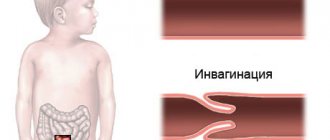A newborn baby has thick stools. What do you need to know?
Infant stool is one of the problematic issues for many mothers. In the mid-20th century, as formula feeding became more common than breastfeeding, a new stereotype of “normal” bowel movements emerged. Formula-fed babies poop differently than infants: formula-fed stool is relatively infrequent, comes out formed and smells bad, reminiscent of adult stool. While stool from breast milk in the first 6 weeks of life is usually liquid and frequent, later, on the contrary, it can be of normal consistency, but with delays. At the same time, often people who do not know that this is quite normal for infants begin to treat the baby either for diarrhea or constipation...
It is normal for a baby under 6 weeks of age to have bowel movements several times a day, little by little, with a yellow or mustard-colored mass without an unpleasant odor. In this case, the stool may well have a heterogeneous consistency, or cheesy inclusions, or - after some time, if the mother does not remove the diaper or diaper for a long time - you may notice that the yellow stool turns green, this is a completely natural oxidation process. All these are signs that are characteristic of a healthy infant!
Signs that may make a mother wary:
* too frequent watery stools - from 12 to 16 bowel movements per day, with a strong odor, indicates that the child actually has diarrhea (diarrhea). You should definitely consult a doctor, and it is very advisable to continue breastfeeding, because breast milk best fills the deficiency of the substances necessary for the baby.
* frequent stools (8-12 times a day), which are green and watery, are often caused by sensitivity to foods or treatment of the child or mother; Often this reaction is caused by cow's milk protein.
Green, watery, foamy stools are usually a sign of something called anterior-hindmilk imbalance, which doctors like to call “lactase deficiency.” True lactase deficiency
is relatively rare, and in the vast majority of cases, this condition of the baby can be corrected by allowing each breast to be emptied completely before moving to the next. In this case, the baby will receive a large portion of fatty “hind” milk, which contains little lactose (unlike the “front” portion that is rich in lactose) and is therefore easier to digest. Clarification so as not to get confused in terms: lactose is the milk sugar found in breast milk, and lactase is the enzyme that is required to break down lactose. The reserves of lactase in the baby’s body are relatively small, and if he receives a lot of “foremilk”, then there is not enough lactase for its normal absorption, so the baby suffers from gas, and the stool takes on a characteristic appearance. Another problem that often arises after 5-6 weeks of a child’s life is relatively rare bowel movement, which is often mistakenly considered constipation and the baby begins to be actively treated. At this age, milk finally becomes mature and the laxative colostrum component leaves it, and therefore most children begin to poop less often. Rare stool in itself is not a cause for concern; it’s just that the child’s body is figuring out how much it can accumulate in itself before pooping. If the process is not interfered with, the child may not poop once or twice even for up to 7 days, after which the normal frequency will be restored. If you constantly interfere, forcing the intestines to empty when they are not yet ready, constipation will become habitual. BUT: Indeed, the child may not poop for up to a week, and the mother does not have to worry under one essential condition: the child ALSO does not worry! If this obviously bothers the child, the mother, of course, should not hope that everything will “work itself out.”
Constipation in a breastfed baby
. These are hard, dry formed stools, the so-called “goat balls”, which are very painful for the child.
The consistency of NORMAL feces, even with its relatively rare occurrence, cannot be considered constipation. These are only the physiological characteristics of this particular organism, like eye color. the angle of the snub nose or the shape of the nails. We will not treat the body because the snub nose does not coincide with the “average angle”.
Why does such a physiologically rare stool (“not constipation”) appear in a baby?
For the urge to defecate, a little person needs to experience a chain of certain sensations. The most important of which is the pressure of feces on the intestines. it is the degree of pressure that forms the skill of relaxing the sphincters in response to tension, and not contracting them. The young, not fully formed intestine is still learning to respond to any external changes. Gently and not stressfully at this stage of his formation, breast milk helps him in this - the only native and adapted product. Just like any student. the intestines undergo a series of tests or even self-tests. Therefore, the stool of a baby in the first half of the year is heterogeneous - sometimes thick, sometimes thin, sometimes often, sometimes rarely. And our adult standards for such a young student are unacceptable. The adult intestine is very different from the baby's intestine.
The main indicator for such rare stools
- this is the child’s well-being and the passing of gas;
the most dangerous sign of constipation is the absence of gas
. then you can worry about intestinal patency. If the baby “farts like a machine gun,” then the cross-country ability is excellent. If the consistency of stool after defecation is normal, without “balls,” then the child does not have a problem.
The intestines are simply in a state of testing the degree of pressure of feces inside on the intestinal walls for optimal defecation; after completion of such a test, the body will select a certain period for defecation. This deadline will be set before. next test, after which everything will change dramatically again.
That is, the main thing is to objectively assess the child’s condition. look at the passage of gases. and not on the calendar.
And yet it’s so strange and scary when bowel movements are not regular and young parents so want to preoccupy themselves with something. What can be done so that the body is “tested” faster, and parents see the coveted poop, without harming the child and without resorting to medications.
Usually they advise:
1. Give extra liquid.
But the problem is not the consistency of the stool. The stool inside is soft, the additional liquid makes it generally liquid and... delays the period of natural bowel movement. As a result, additional mechanical stimulation is required (with a cotton swab in oil, a thermometer). but more often it turns out that due to the additional liquid and the extended period, the “front” part of the stool has formed into a dense, hard “plug”, and the “higher” part is a very liquid, watery stool. Pooping out the “plug” is very painful and unpleasant for the baby.
That is, in the case of physiological rare stools, supplementing with any liquid can worsen the situation.
2. More “experienced” people may advise giving a drop of juice to the child
.
Here you need to take into account. that juice is a very big irritant
with a high acidity factor. A complete lack of fiber, but a killer carbohydrate environment due to sugars. The child’s intestines simply cannot digest this yet. To digest the juice, additional enzymes are needed, which the child’s pancreas does not produce in infancy. And it turns out that there is an irritating product in the intestines - sugar from the juice. Until a certain age, the mucous membrane of an infant is very perceptive and sensitive. Through its walls, molecules penetrate into the blood, and sugars begin to greatly irritate the mucous membrane, the body receives a signal to get rid of the aggressors as quickly as possible, the pancreas tries to form enzymes to break down carbohydrates in the juice. The intestines collect additional fluid to partially neutralize aggressive sugars and begin to contract, removing the irritant. Externally, the child may have stool quite quickly after the juice is infused. But at the cost of enormous stress on the pancreas, mucous membrane and the body as a whole. At the same time, the necessary minerals and vitamins are washed out of the body, and the child loses a lot of fluid. The carbohydrate component creates an ideal environment in the intestines for the proliferation of pathogenic and opportunistic flora (candida, staphylococcus), which is why thrush in the child’s mouth is so common after copulation.
Juice is one of the most cruel methods of influencing the baby’s body.
.
3. Give an enema.
The liquid will create additional pressure, the same pressure that the intestines have been waiting for, and before the physiological readiness of the body there will be stool. The body’s “self-test” is down. Defecation was caused by a mechanical stimulator, contraction of the intestines, but the child himself needs to learn to relax. I think everyone has heard stories from two or three year olds who have problems with bowel movements. Often (not always) these are children who were either bottle-fed, or the period of “learning” on safe stool from breast milk passed against the background of stimulation of bowel movements.
So what to do? Nothing. Wait. If the child behaves as usual and farts well. that means this is another “test”.
But if the child strains, blushes, gases do not pass, the stomach is hard, and the child cries upon palpation - this is a completely different matter. We definitely need help here.
The first step is to massage your tummy.
Massage clockwise with full palm. Or exercises like "bicycle".
A warm bath doesn’t help anyone relax. Mom and baby plunge into warm water of 37 degrees, breastfeed right in the water, then quickly get out, mom or dad rub their hands. legs and tummy with baby oil, then you can put the baby to lie on the mother's tummy relaxed, it is worth remembering that it is easier to poop lying on the tummy or side than on the back, or the mother can feed in the dismounting position (so that the butt is sagging and the baby is almost vertically) and in 80% you can wait for the “coveted poop”.
Very good to hold the baby
. complaining about the tummy, above the sink under the knees, lubricating the anus area with baby oil. The pose is the same as when disembarking.
Only when these methods do not help can you use the first step of mechanical stimulation. Take a sanitary stick, generously lubricate the tip with Vaseline or baby oil and insert it a little into the butt. No more than a centimeter! Just insert and twist a little. Put away. Put on the diaper and place it on mom's stomach, tummy to tummy. Or press your knees to your stomach in a pose on your back.
And only if that didn’t help either. then the next step is a glycerin suppository.
But as a rule, everything works out at the first step.
I would like to highlight the purpose of any treatment; parents should analyze - what are they treating - the child’s condition or the analysis? Does your doctor prescribe bifidobacteria? Is there a correlation with the start of use and the onset of stool retention? You have been warned that bacterial preparations containing bifidocultures affect the stool and can cause chronic constipation, which will be constipation, and not physiological reactions. Always monitor your child's stool very carefully when using any medications.
Smile with your child!










